5 Days
| DAY | ISLAND | PLACES |
| SUN | Mosquera | AM: Baltra Airport
PM: Mosquera Islet |
| MON | Isabela | AM: Tintoreras
PM: Sierra Negra Volcano – Giant Tortoise Breeding Center |
| TUE | Santiago
Rabida |
AM: Chinese hat
PM: Rabida Island |
| WED | Santiago | AM: Egas Port
PM: Espumilla Beach – Biccaneer Cove |
| THU | North Seymour | AM: North Seymour Island
Baltra Airport |
ITINERARY DAY BY DAY:
MOSQUERA ISLET
AM: Flight to Galapagos Transfer early to the airport for our flight to the Galapagos Islands. Upon arrival in Baltra, meet our naturalist guide, who will assist with the transfer to the Monserrat Yacht.
PM: Mosquera Islet
Wander along the beach and keep a look out for wildlife on land, in the air, and at sea. Relax on the sand or search for aquatic life in the tidal pools that dot the coastline.
ISABELA ISLAND: TINTORERAS AND SIERRA NEGRA VOLCANO – GIANT TORTOISE BREEDING CENTER
AM: Tintoreras
Take a panga across the bay to “Tintoreras” Shark Alley to observe the whitetip reef sharks found swimming in the channels between the rocks. Get a close-up view of pelicans, frigatebirds, and diving blue-footed boobies. Watch for manta rays and rare Galápagos penguins.
PM: Sierra Negra Volcano
Hike to the rim of the 10km (6 mi) wide crater of the Sierra Negra volcano, which has the largest basaltic caldera in the Galápagos. Trek across the moon-like landscape of the lava fields and fumaroles, and enjoy spectacular views looking north toward Fernandina and the rest of Isabela Island. The volcano last erupted in October 2005, making it the most recent eruption of the Galápagos.
PM: Giant Tortoise Breeding Center
Walk through the town’s wetlands to visit the Giant Tortoise Breeding Centre. With the giant tortoise on its way to extinction in the late 1950s, this program was established to protect these noble creatures.
SANTIAGO ISLAND: CHINESE HAT AND RABIDA ISLAND
AM: Chinese Hat
Explore Chinese Hat’s beautiful landscape and spectacular white-coral sand beach followed by snorkelling with sea lions and penguins and swimming opportunities in the cove.
Snorkel right from the white-coral sand beach and come face to face with playful sea lions and large schools of tropical fish. Keep an eye out for marine iguanas and penguins too!
PM: Rabida Island
Arrive at a red sand beach at Rábida to explore its trails. A short trail leads to a saltwater lagoon; another trail goes past the lagoon to the interior, where the revered palo santo trees grow. (When burned, the branches of this tree give off a pleasing aroma and ward off mosquitoes.) Head back to the beach to see prehistoric-looking pelicans nesting among low-lying bushes – it’s a rare treat to watch parent pelicans return with gullets full of fish for the squawking youngsters.
Take a panga ride from the beach to a cliff wall that drops off into the water to find one of the best deep-water snorkeling spots in the islands.
SANTIAGO ISLAND: EGAST PORT AND ESPUMILLA BEACH – BUCCANEER COVE
AM: Puerto Egas
Explore the spectacular shoreline of Puerto Egas, also known as James Bay. Spot a great number of shore birds and reptiles – the beach area is home to a plethora of wildlife.
Grab a snorkel and jump into the water right off the beach to explore Puerto Egas’ interesting underwater world. Keep your eyes peeled for rays, turtles, and reefsharks while snorkelling. After, visit the large tidal pool area – marine iguanas and Sally Lightfoot crabs are everywhere.
PM: Espumilla Beach
Head to Playa Espumilla, one of the most idyllic beaches in the Galápagos Islands, which has thick mangroves and sea turtle nesting sites.
PM: Buccaneer Cove
Jump into the panga and cruise alongside high cliffs and rock formations on this visit to Bucaneer Cove, which was a favourite hideout for pirates looking to stock up their boats with food and water. Spot sea lions relaxing on the beach and sea birds nesting in the cove – there’s lots to see at this site.
NORTH SEYMOUR ISLAND
AM: North Seymour Island
Have an amazing wildlife experience visiting North Seymour Island – this island is teeming with life! Follow trails to see all the action (you may need to give way to a passing sea lion or marine iguana while walking). See blue-footed booby nests where mating pairs perform their courtship dance. Head to a rocky shore to see flocks of pelicans having lunch in a dive bomb feeding frenzy, then turn inland to a large nesting site of magnificent frigatebirds. These huge, dark acrobats have two-metre (6.5 ft) wingspans, and males, with their puffed-up scarlet throat sacks, sit precariously perched in low bushes to watch over their equally large chicks. Top off the excursion with a snorkel among sea lions and rays. Transfer to the airport for our flight to Quito or Guayaquil.
Important: Itineraries are unlikely to change significantly but are subject to change. Weather, wildlife breeding, safety concerns, instructions from the Galapagos National Park, specific abilities and interests of passengers as well as operational matters may cause your guide or captain to change the time or nature of visits. Your guide and captain will always endeavor to select the best itinerary within these limits.
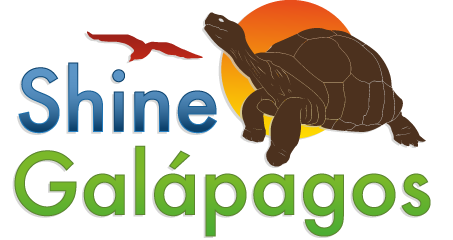
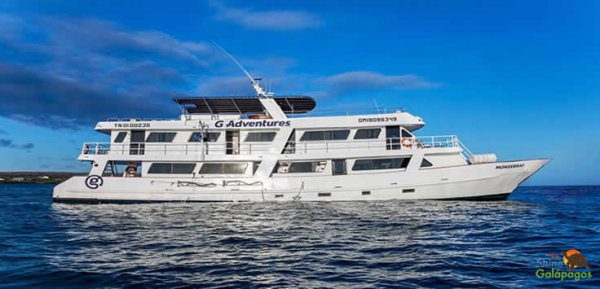
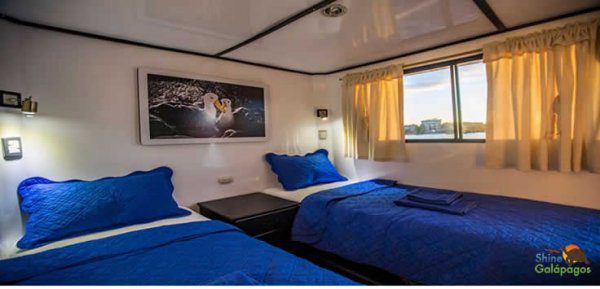
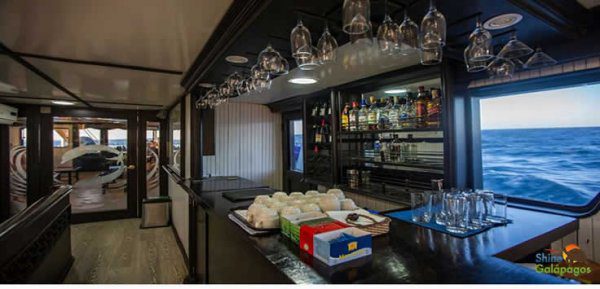







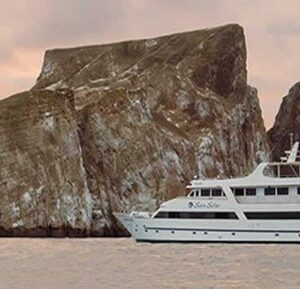
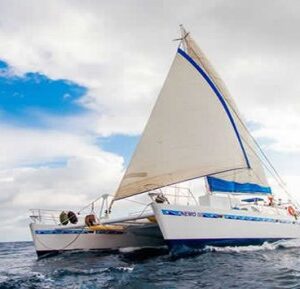
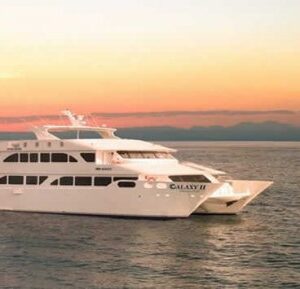
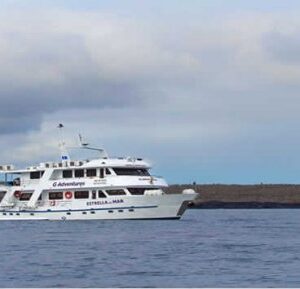
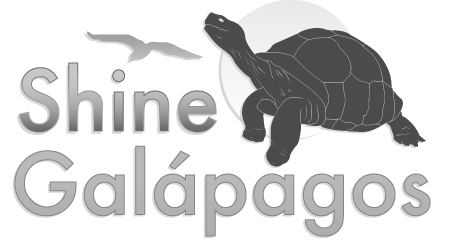
Reviews
There are no reviews yet.